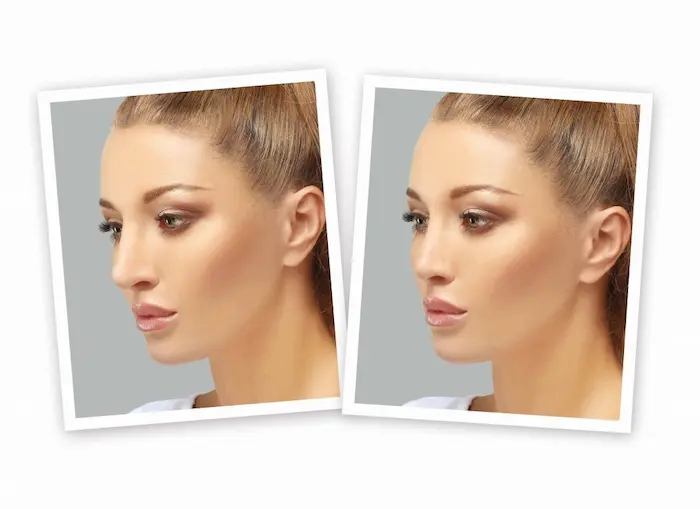
Beyond Expectations: The Art and Science of Revision Rhinoplasty
Rhinoplasty, often referred to as a "nose job," is a surgical procedure designed to enhance the aesthetics and functionality of the nose.
Rhinoplasty, often referred to as a "nose job," is a surgical procedure designed to enhance the aesthetics and functionality of the nose. While many individuals undergo rhinoplasty with successful outcomes, some may require revision rhinoplasty to address concerns or complications that arise after the initial surgery. In this comprehensive guide, we will explore the intricacies of revision rhinoplasty, including its purpose, the surgical process, potential risks, and the expected benefits.
Understanding Revision Rhinoplasty
Revision rhinoplasty is a secondary procedure performed to correct or enhance the results of a previous rhinoplasty. Individuals may seek revision rhinoplasty for various reasons, such as dissatisfaction with the initial outcome, functional issues, or the presence of complications. Unlike primary rhinoplasty, revision procedures can be more complex due to altered nasal anatomy and scar tissue from the previous surgery.
Common Reasons for Revision Rhinoplasty
Cosmetic Dissatisfaction: Patients may undergo revision rhinoplasty if they are unhappy with the aesthetic results of their initial surgery. This dissatisfaction could stem from issues such as asymmetry, visible deformities, or an unnatural appearance.
Functional Concerns: Some individuals may experience breathing difficulties or other functional issues following their primary rhinoplasty. Revision rhinoplasty can address structural problems affecting nasal airflow and overall function.
Complications: Complications can arise after any surgical procedure. In the context of rhinoplasty, complications may include infection, excessive scarring, or issues related to cartilage grafts. Revision rhinoplasty aims to correct these problems and improve overall outcomes.
Unforeseen Changes: Over time, the nasal structure may change due to factors like aging or injury. Revision rhinoplasty can be sought to maintain or restore the desired appearance.
The Revision Rhinoplasty Procedure
The revision rhinoplasty procedure involves careful assessment, planning, and execution to achieve the desired results. Here is an overview of the typical steps involved:
Consultation and Evaluation: Before undergoing revision rhinoplasty, patients undergo a thorough consultation with the surgeon. The surgeon reviews the patient's medical history, assesses the nasal structure, and discusses the specific concerns and goals.
Preoperative Planning: Based on the evaluation, the surgeon develops a customized surgical plan. This may involve addressing issues such as cartilage grafting, reshaping, or correcting asymmetries.
Anesthesia: Revision rhinoplasty is typically performed under general anesthesia to ensure the patient is comfortable and pain-free throughout the procedure.
Incisions: Depending on the extent of the revision, the surgeon may use either an open or closed approach. In the open approach, a small incision is made across the columella (the strip of skin between the nostrils), providing better visibility. The closed approach involves incisions made inside the nostrils.
Correction of Structural Issues: The surgeon addresses the specific concerns identified during the consultation. This may involve reshaping or augmenting the nasal structure using cartilage grafts, which can be harvested from the patient's septum, ear, or rib.
Closing Incisions: Once the necessary corrections are made, the surgeon carefully closes the incisions with sutures. If external sutures are used, they are typically removed within a week.
Recovery: The recovery process for revision rhinoplasty is similar to that of primary rhinoplasty. Patients may experience swelling, bruising, and mild discomfort, but these symptoms gradually subside over time.
Potential Risks and Complications
Like any surgical procedure, revision rhinoplasty carries inherent risks. It is crucial for patients to be aware of these potential complications, which may include:
Infection: Although rare, infections can occur and may require prompt medical attention and treatment.
Bleeding: Excessive bleeding during or after surgery is a potential risk. Surgeons take precautions to minimize this risk, and patients are advised to avoid certain medications that can increase bleeding.
Scarring: Revision rhinoplasty involves incisions, which can result in visible scars. Skilled surgeons aim to minimize scarring, but individual healing varies.
Anesthesia Risks: General anesthesia carries its own set of risks, such as allergic reactions or respiratory issues. However, these risks are generally low, and anesthesiologists closely monitor patients throughout the procedure.
Unpredictable Healing: The healing process is unique to each individual, and there is a degree of unpredictability in how tissues will respond. Some patients may require additional touch-ups or revisions to achieve optimal results.
Benefits of Revision Rhinoplasty
Improved Aesthetics: One of the primary benefits of revision rhinoplasty is the potential for enhanced nasal aesthetics. Correcting asymmetries, deformities, or dissatisfaction with the initial outcome can lead to improved facial harmony.
Functional Improvement: Revision rhinoplasty not only addresses cosmetic concerns but also focuses on improving nasal function. Patients who experienced breathing difficulties or other functional issues may find relief after the revision procedure.
Enhanced Confidence: A successful revision rhinoplasty can have a positive impact on an individual's self-esteem and confidence. Feeling satisfied with the appearance of the nose can contribute to overall well-being.
Correction of Complications: For individuals who faced complications after their primary rhinoplasty, revision surgery offers an opportunity to correct issues such as infection, scarring, or graft-related problems.
Tailored Approach: Each revision rhinoplasty is a unique procedure tailored to the individual's specific concerns and anatomy. This personalized approach increases the likelihood of achieving desired results.
Other Specific Considerations
1. Patient Education and Expectations:
Communication is Key: Surgeons should prioritize open communication with patients to ensure realistic expectations. It is crucial for individuals to understand that revision rhinoplasty may have limitations, and achieving perfection is not always possible.
2. Choosing a Skilled Surgeon:
Experience Matters: Due to the complexity of revision rhinoplasty, it is essential to choose a surgeon with significant experience in both primary and revision procedures. Patients should carefully research and select a board-certified plastic surgeon with a proven track record of successful outcomes in revision cases.
3. Timing of Revision Rhinoplasty:
Patience is Key: Surgeons often recommend waiting at least a year after the initial rhinoplasty before considering revision. This allows sufficient time for the tissues to heal and for the final results of the primary surgery to manifest. Rushing into revision surgery too soon can lead to suboptimal outcomes.
4. Non-Surgical Alternatives:
Injectable Fillers: In some cases, non-surgical options like injectable fillers can be used to address minor irregularities or asymmetries after rhinoplasty. While these are temporary solutions, they can provide a non-invasive approach for certain concerns.
5. Psychological Impact:
Emotional Considerations: It's important to recognize the emotional and psychological impact of seeking revision rhinoplasty. Some individuals may experience anxiety or emotional stress related to their appearance, and surgeons should be attuned to these aspects during the consultation process.
6. Postoperative Care and Recovery:
Follow-Up Appointments: Regular follow-up appointments with the surgeon are crucial for monitoring the healing process and addressing any concerns that may arise during recovery. Patients should follow postoperative care instructions diligently to optimize healing.
7. Cost Considerations:
Financial Planning: Revision rhinoplasty can be more complex and, in some cases, more expensive than primary rhinoplasty. Patients should be aware of the potential financial implications and plan accordingly.
8. Long-Term Results:
Understanding Longevity: While revision rhinoplasty can provide significant improvements, patients should understand that the aging process and other factors may continue to affect the nose's appearance over time. Realistic expectations and a long-term perspective are important.
9. Support System:
Emotional Support: Having a support system in place, including friends and family, can be beneficial for patients undergoing revision rhinoplasty. Emotional support plays a crucial role in the recovery process.
Conclusion
Revision rhinoplasty is a complex but valuable option for individuals seeking to address concerns or complications following a primary rhinoplasty. While the procedure is more complex due to altered nasal anatomy and scar tissue, advancements in surgical techniques and experienced surgeons contribute to successful outcomes. Before opting for revision rhinoplasty, thorough consultation with a board-certified plastic surgeon is essential to discuss expectations, risks, and potential benefits. With proper planning and expertise, revision rhinoplasty can offer patients the opportunity to achieve the desired aesthetic and functional improvements, ultimately leading to increased satisfaction and confidence in their appearance.
You can access expert advice from renowned surgeons in India without any hassle by simply sending an email or a WhatsApp message through our website.


Comments
Login & Write comment